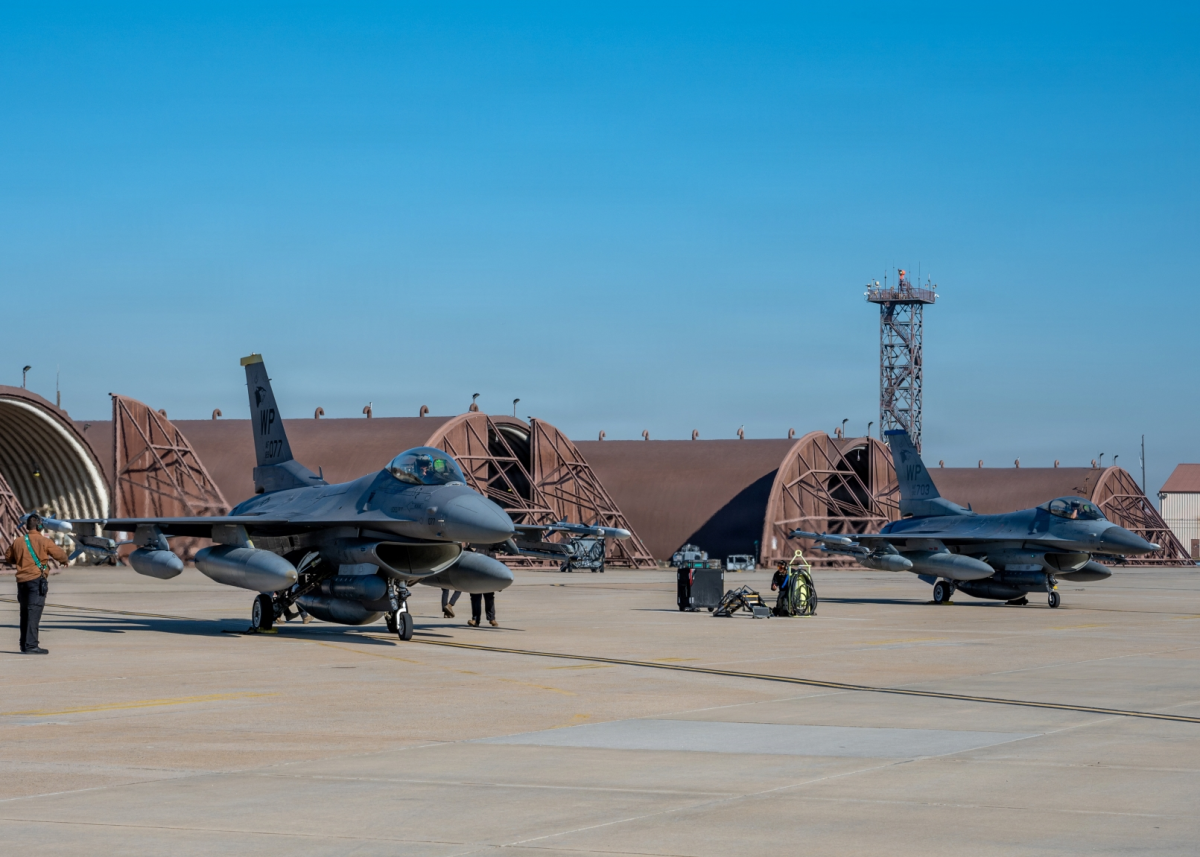
The United States continues to bolster its military presence on the Korean Peninsula, regrouping additional F-16 fighter aircraft at an air base near the North Korean border.
Newsweek has contacted the North Korean Embassy in Beijing for comment via email.
Why It Matters
The U.S. has deployed about 28,500 troops in South Korea under a mutual defense treaty signed after the Korean War in 1953, along with assets such as F-16 jets and unmanned drones, to deter and defend against aggression from North Korea.
While the F-16 jet is not as advanced as the F-35 stealth aircraft operated by the U.S. military and its allies in the western Pacific, U.S. forces in South Korea received F-16 jets from Japan earlier this year, which have enhanced capabilities following upgrades.
North Korea, one of nine countries with nuclear weapons, has been strengthening its defense posture against the U.S.-South Korea military alliance. In August, state media reported that leader Kim Jong Un supervised the test-firing of two new types of air-defense missiles.
What To Know
The 51st Fighter Wing, a U.S. Air Force combat unit headquartered at Osan Air Base in South Korea, said a group of F-16 jets arrived at the base from Kunsan Air Base on November 19 and 21 as part of the second phase of a test known as “Super Squadron.”
Osan Air Base is about 33 miles south of Seoul, the capital city of South Korea, and 48 miles south of the Korean Demilitarized Zone, which separates North and South Korea. Kunsan Air Base is farther from the border, about 150 miles south of Seoul.
“Super Squadron” is designed to test new ways to organize, deploy and sustain fighter aircraft in the Indo-Pacific, the 51st Fighter Wing said. The test is expected to continue through next year to improve how the Air Force employs F-16 jets across the region.
The first phase of the test began in October 2024, when nine F-16 jets relocated from Kunsan Air Base to Osan Air Base. A second group of jets, involving 31 aircraft, began their temporary redeployment in late July, according to a previous announcement.
The newly arrived jets were assigned to the 35th Fighter Squadron. Lieutenant Colonel Joseph Basala, the unit’s commander, said operating from Osan Air Base would offer opportunities to sharpen the skills “we need to answer the call at a moment’s notice.”
The 51st Fighter Wing said the second phase of the test would support the ongoing evaluation of manpower, maintenance and operations concepts, enabling fighter jet squadrons to generate more combat power without permanently relocating forces.
What People Are Saying
U.S. Air Force Colonel Ryan Ley, the commander of the 51st Fighter Wing, said in a news release: “The Super Squadron test gives us a real-world opportunity to explore how we can fight more efficiently with greater flexibility and resilience. Hosting the [35th Fighter Squadron] strengthens our combined readiness and enhances the airpower available to defend the Republic of Korea. This effort benefits the entire peninsula and reinforces the strength of our alliance.”
U.S. Air Force Lieutenant Colonel Joseph Basala, the commander of the 35th Fighter Squadron, said: “This movement is about strengthening the way we fight. By operating from Osan, our team gains new opportunities to integrate with partners, adapt to unfamiliar environments, and sharpen the skills we need to answer the call at a moment’s notice. This effort directly improves our readiness and reinforces our commitment to the defense of the peninsula.”
What Happens Next
It remains to be seen whether the U.S. military will further enhance its airpower on the Korean Peninsula by forward-deploying F-35 jets to replace F-16 jets in the future.
